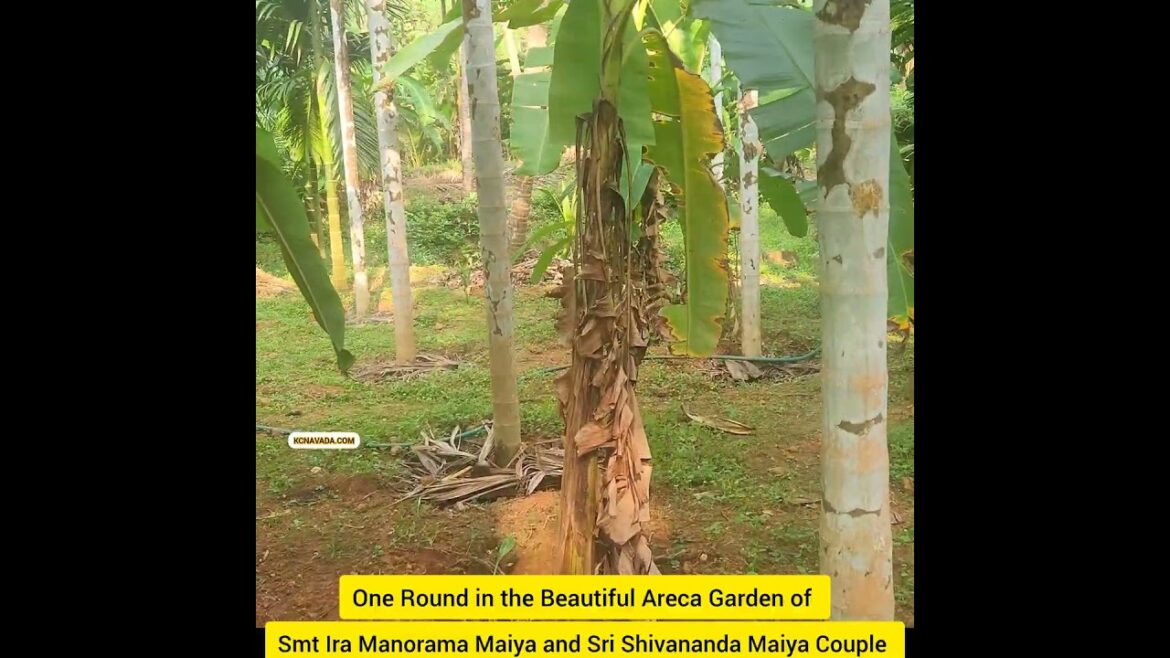Gardening is the process of growing plants for their Coconut, Arecanut, vegetables, fruits, flowers, herbs, etc and appearances within a designated space. Gardens fulfill a wide assortment of purposes, notably the production of aesthetically pleasing areas, medicines, cosmetics, dyes, foods, poisons, wildlife habitats, and saleable goods (see market gardening). People often partake in gardening for its therapeutic, health, educational, cultural, philosophical, environmental, and religious benefits.
Gardening varies in scale from the 800 hectare Versailles gardens down to container gardens grown inside. Gardens take many forms, some only contain one type of plant while others involve a complex assortment of plants with no particular order.
Gardening can be difficult to differentiate from farming. They are most easily differentiated based on their primary objectives. Farming prioritizes saleable goods and may include livestock production whereas gardening often prioritizes aesthetics and leisure. As it pertains to food production, gardening generally happens on a much smaller scale with the intent of personal or community consumption. There are cultures which do not differentiate between farming and gardening. This is primarily because subsistence agriculture has been the main method of farming throughout its 12,000 year history and is virtually indistinguishable from gardening.
Plant domestication is seen as the birth of agriculture. However, it is arguably proceeded by a very long history of gardening wild plants. While the 12,000 year-old date is the commonly accepted timeline describing plant domestication, there is now evidence from the Ohalo II hunter-gatherer site showing earlier signs of disturbing the soil and cultivation of pre-domesticated crop species.[8] This evidence pushes early stage plant domestication to 23,000 years ago which aligns with research done by Allaby (2022) showing slight selection pressure of desirable traits in Southwest Asian cereals (einkorn, emmer, barley).[9] Despite not qualifying as plant domestication, there are many archaeological studies pushing the potential date of hominin selective ecosystem disturbance back up to 125,000 years ago.[10] Much of these early recorded ecosystem disturbances were made through hominin use of fire, which dates back to 1.5 Mya (although at this time fire was not likely being wielded as a landscape-changing tool by hominids).[11] This anthropogenic ecosystem disturbance may be the origins of gardening.
Every hunter-gatherer society has developed a niche of some sort, allowing them to thrive or even just survive amongst their environments.[12] Many of these prehistoric hunter-gatherers had constructed a niche allowing for easier access to, or a higher amount of edible plant species.[13] This shift from hunting and gathering to increasingly modifying the environment in a way which produces an abundance of edible plant species marks the beginning of gardening.[14] One of the most documented hominin niches is the use of off-site fire.[15] When done intentionally, this is often called forest gardening or fire stick farming in Australia.[16] The modern study of fire ecology describes the many benefits off-site fires may have granted these early humans.[17] Some of these agroecological practices have been well documented and studied during colonial contact. However, they are vastly under represented in research done on early hominin fire use.[18] Based on current research, it is evident that these niches developed separately in different societies across different times and locations.
The Americas
There are long traditions of gardening within Indigenous societies spanning from the northernmost parts of Canada down to the southernmost tip of Chile and Argentina. The Arctic and Subarctic societies relied primarily on hunting and fishing due to the harsh climate although they have been known to collectively use at least 311 different plants as foods or medicines. The substantial knowledge and use of these plants along with the communal harvesting sites and emphasis on reciprocity between humans and plants indicates a basic level of gardening. Similarly, the Fuegian Indigenous groups in South America had developed seemingly comparable niches due to a similar tundra ecosystem. While there are very few studies on the Fuegians, Darwin mentioned wild edible plants such as fungi, kelp, and wild celery growing next to the various Fuegian shelters.
Many popular crops originate from pre-colonial Indigenous agricultural societies. Some of these include maize, quinoa, common bean, peanut, pumpkin, squash, pepper, tomato, cassava, potato, blueberry, cactus pear, cashew, papaya, pineapple, strawberry, cacao, sunflower, cotton, Pará rubber, and tobacco.
Courtesy:- Wikipedia
Here, you can see a Beautiful Agriculture Garden of Ira of Bantwal Taluk.
Watch Videos of Chandrashekara Navada @kcnavada.com

